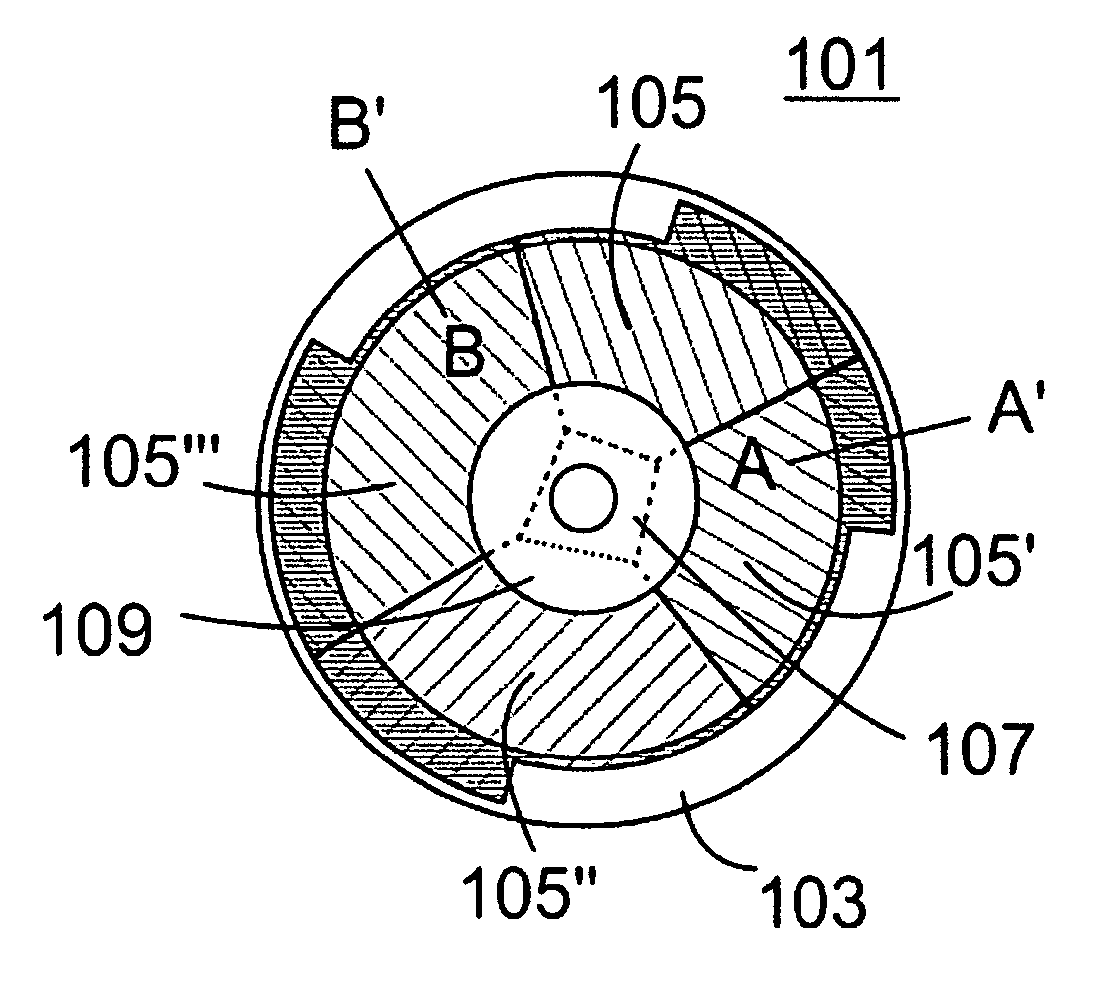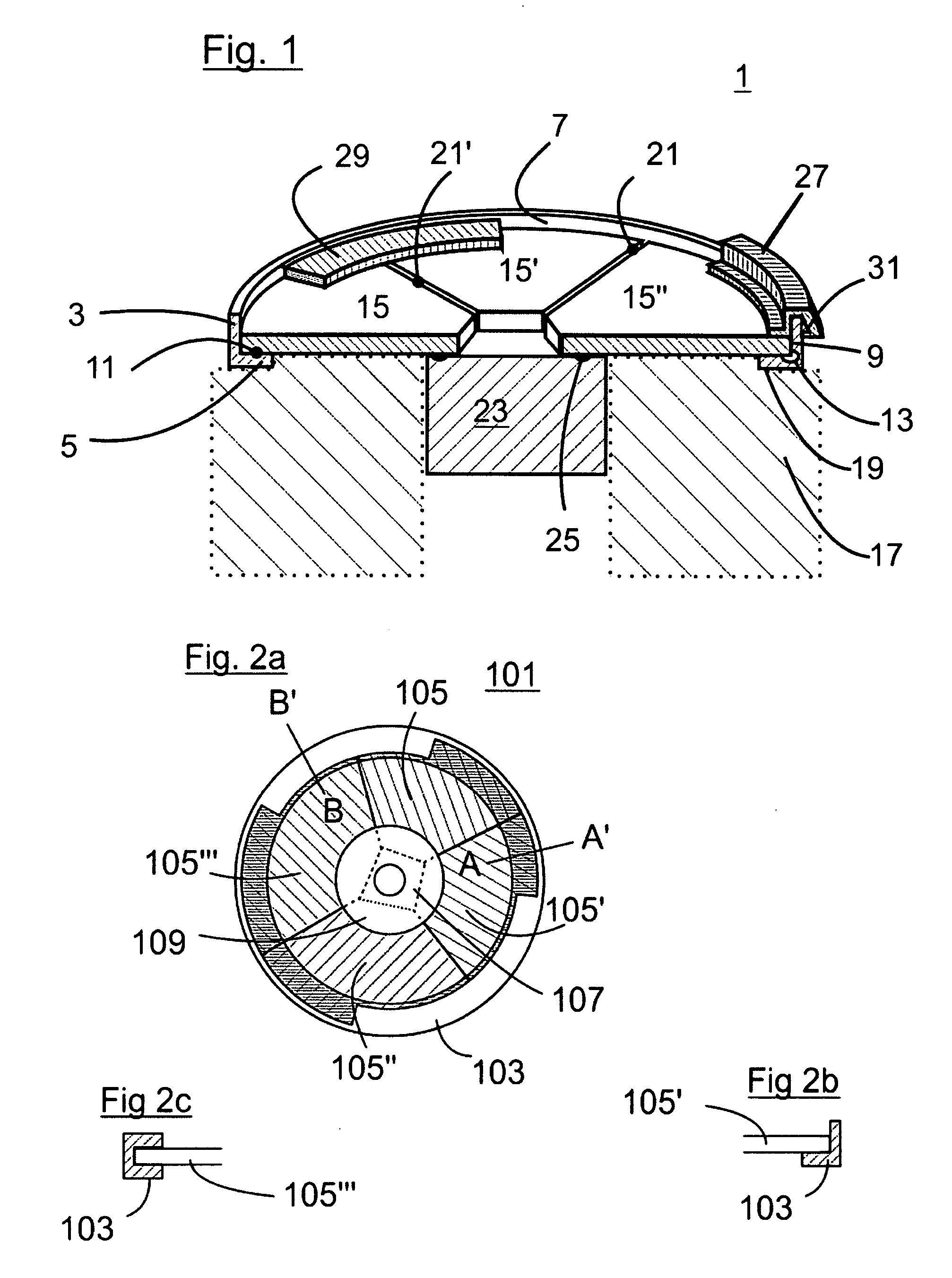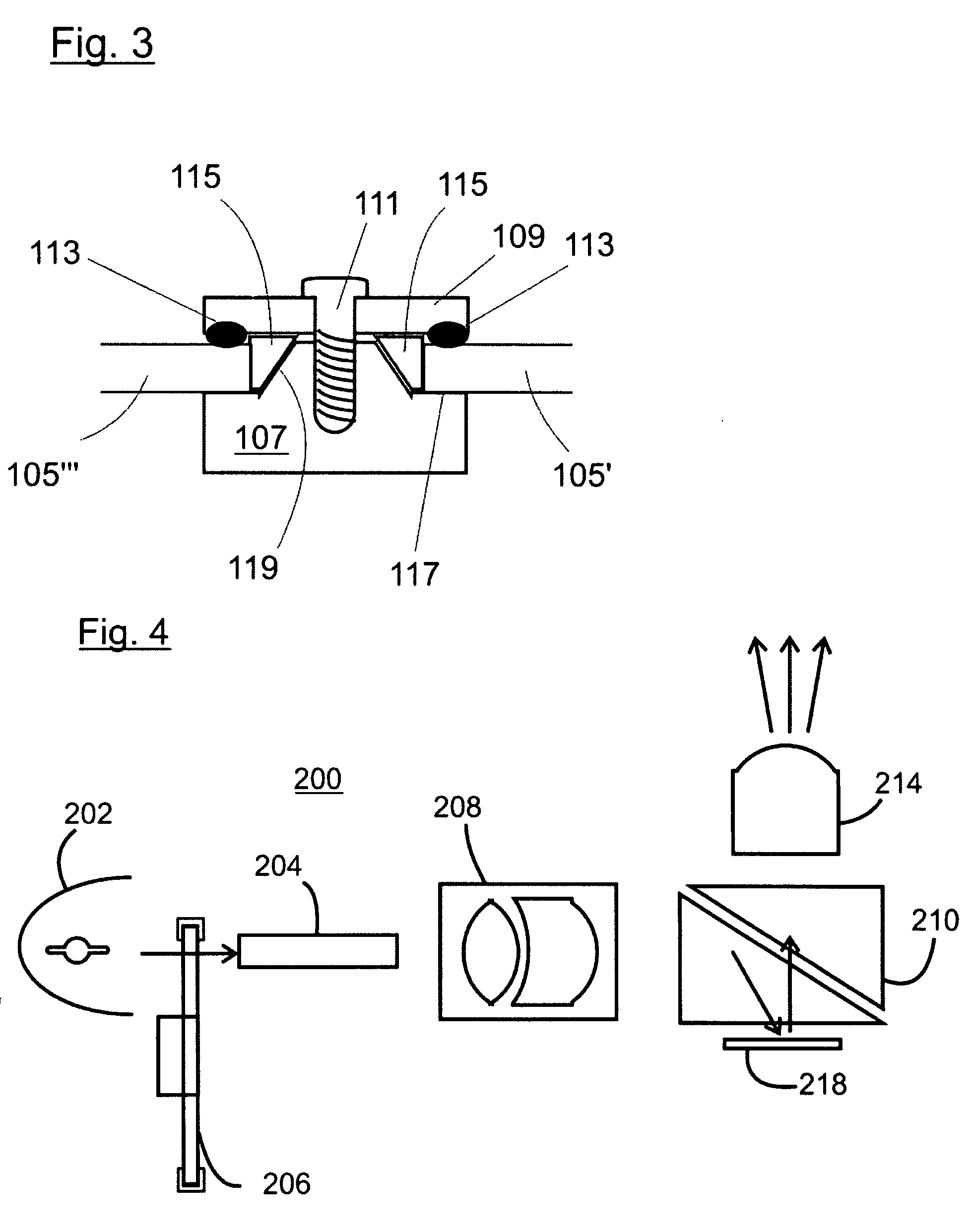Color wheel
- Summary
- Abstract
- Description
- Claims
- Application Information
AI Technical Summary
Benefits of technology
Problems solved by technology
Method used
Image
Examples
first embodiment
[0046] the assembly of the color ring with the outer ring as described above is accomplished in the following manner:
[0047] A thin layer of adhesive is placed on the outer ring primary or secondary bond area or both bond areas, preferably, if given into the recess 13.
[0048] Adhesive is preferably not applied along the full rim section in order to minimize the stress in the adhesive due to different thermal expansion of segment, adhesive and outer ring. For example doted lines or discrete spots may be used.
[0049] In one embodiment these discrete spots are located at the endpoints of the outer circular arc of the segments where neighboring segments come together, because in these areas the optical active area is interrupted because of transition between two segments.
[0050] It is known that glass cracking occurs by propagation of microcracks at the edges into the glass. Therefore, according to another embodiment of the present invention, adhesive is applied to the secondary bond su...
second embodiment
[0062]FIG. 2a shows the top view of a color wheel 101 according to the present invention. The outer ring 103 has the profile of an interrupted U-shape. In order to show this more clearly, FIG. 2b shows a cut along the line A-A′ and FIG. 2c shows a cut along the line B-B′. In this case the segments 105,105′,105″,105′″ inserted into L-shaped parts according to A-A′ and are slided into the U-shape according to B-B′. One of the L-shaped part must be at least as large as the largest of the segments 105,105′,105″,105′″. Because the segments 105,105′,105″,105′″ are assembled into the outer ring 103 before the assembly with a hub, the segments 105,105′,105″,105′″ can be slid in radially.
[0063]FIG. 2 shows in addition another possibility to realising the attachment of a hub to the segments 105,105′,105″,105′″ without glue. In this example part of the hub 107 as the form of a quadrangle. As mentioned before the “inner circle arc” of the filter segment can be modified considerably. Here the “i...
PUM
 Login to view more
Login to view more Abstract
Description
Claims
Application Information
 Login to view more
Login to view more - R&D Engineer
- R&D Manager
- IP Professional
- Industry Leading Data Capabilities
- Powerful AI technology
- Patent DNA Extraction
Browse by: Latest US Patents, China's latest patents, Technical Efficacy Thesaurus, Application Domain, Technology Topic.
© 2024 PatSnap. All rights reserved.Legal|Privacy policy|Modern Slavery Act Transparency Statement|Sitemap



